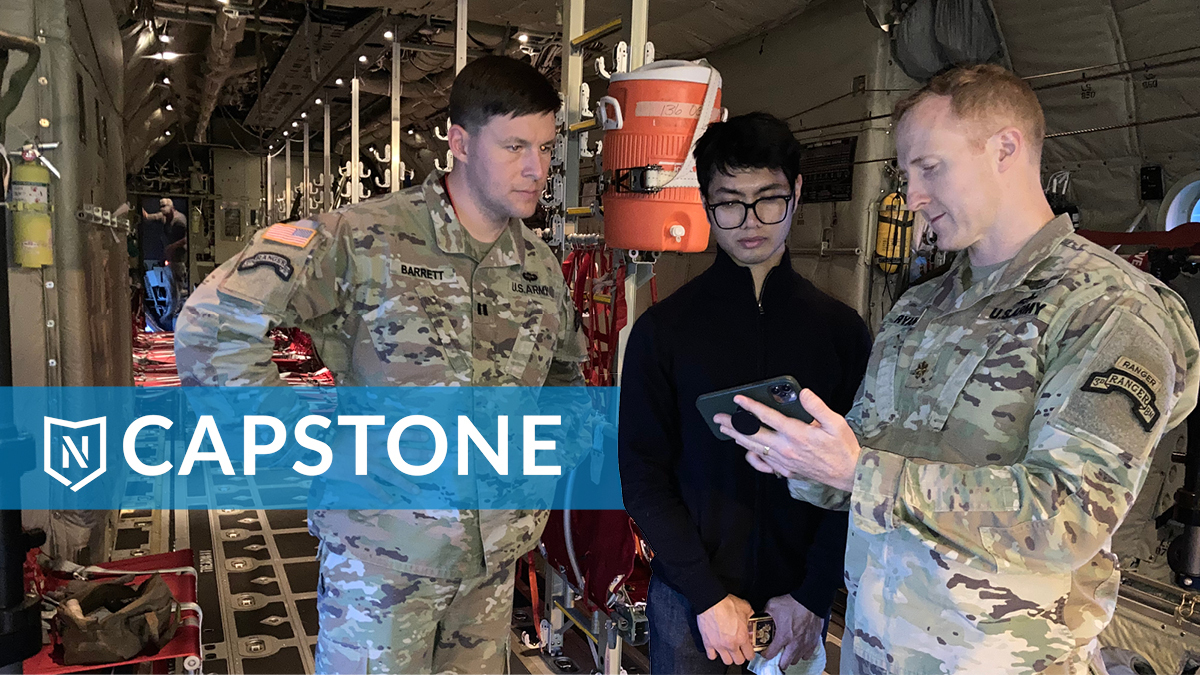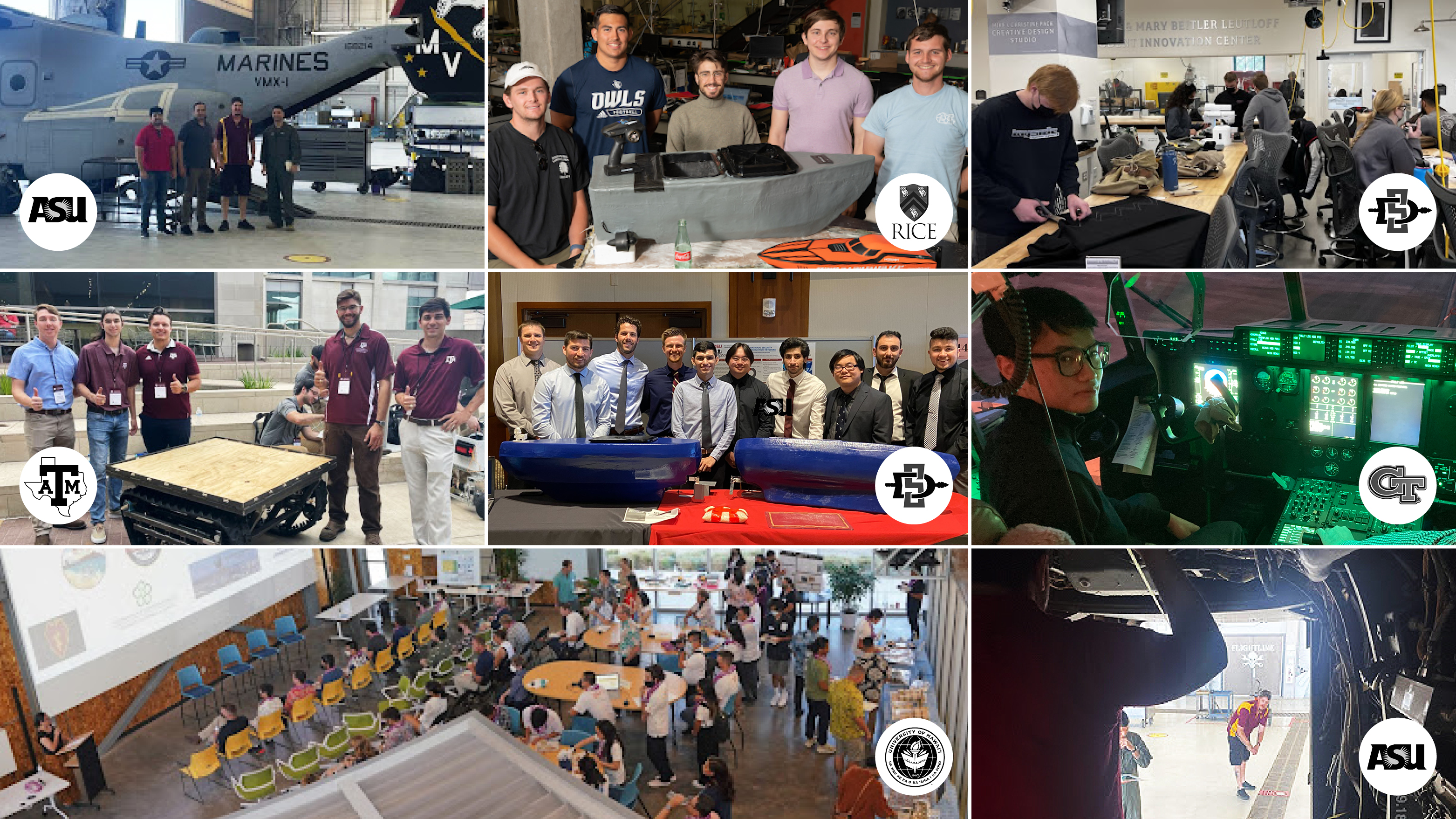
Students Demonstrate Defense-innovation Prototypes in Capstone Course

University students enrolled in the National Security Innovation Network (NSIN) Capstone course this year delivered early-stage prototypes solving technical and policy-centered problems for the Department of Defense (DoD).
NSIN Capstone offers experiential learning opportunities in defense innovation for university students at the undergraduate and graduate level seeking to satisfy academic requirements while also serving national security. Students possess diverse skills ranging from mobile and web app development, data analysis and visualization, hardware prototyping, social media strategy, and technology scouting. Throughout Capstone, students work directly with military and high-level national security leaders on mission-focused projects, participate in professional development opportunities, and experience how their skills can impact national security.
“There are two different objectives that have to be appropriately managed. On one hand, the soldier wants a solution to a problem. For the student, it’s about learning, experiential learning, and progress,” said Army 25th Infantry Division’s Lt. Mahdi Al-Husseini at an NSIN Capstone showcase day at the University of Hawaiʻi at Mānoa.
By building long-term relationships between universities and DoD partners, the NSIN Capstone program also helps find and source new DoD problems for students to solve. For instance, students in Capstone this summer at Florida Atlantic University are exploring how artificial reality and virtual reality technologies can help facilitate training tasks for the Air Force.Another cohort at Carnegie Mellon is working with U.S. Strategic Command (USSTRATCOM) on policy solutions outlining the role of U.S. nuclear weapons in deterring strategic or existential attacks while looking into how declaratory policy affects overall U.S. nuclear decisions.
Many students in the spring-semester cohort traveled to their DoD partners and demonstrated the Capstone prototypes in person. Look at some of the projects and outcomes below:

Arizona State University
ASU Capstone students developed a loading system with Naval Air Systems Command (NAVAIR) Cargo and Special Operations for the CH-53 Super Stallion, VF-22 Osprey, and CH-47 Chinook helicopters. In March 2022, the team traveled to Marine Corps Air Station Yuma to learn about the aircraft that they were working on and ask Marines questions to better understand how loading systems should function.
“The trip went really well. We (could) see the smallest and the largest of the aircraft we are building for and talk to a loadmaster and a pilot about their perspective. Understanding the constraints will help us make a better product,” said Jake Taraj, ASU Capstone student.
Georgia Tech
Capstone students innovated a software application with U.S. Special Operations Command (USSOCOM) to modernize departure airfield control officers (DACOs) processes, adapting operational procedures such as personnel and inventory reloading onto aircraft during a crisis.
The Ohio State University
Students in the inaugural cohort of the Masters in Translational Data Analytics program at Ohio State University presented their Capstone solutions to DoD leadership at the end of the semester.
San Diego State University and Rice University
NSIN Capstone students at San Diego State University and Rice University prototyped boats for the U.S. Coast Guard this semester. These student technologists improved coastal surveillance, detection, and interdiction capabilities against threats posed by the transit of drugs in autonomous surface vessels across the maritime border with Mexico and into California.The students at Rice University also received a cash award of $3,000 as the top innovation prize at the university’s engineering design showcase event, Willy Revolution Awards for Outstanding Innovation.
Texas A&M
Ten students improved a vital computer-aided design system with the guidance of mentors from the U.S. Army Combat Capabilities Development Command (DEVCOM) Analysis Center. The students also visited DEVCOM to demonstrate their prototype.
University of Colorado at Denver
University of Colorado Denver (CU Denver) students in NSIN Capstone developed cost-effective solutions for first responders to communicate and navigate during indoor emergencies, working with staff and resources from the Air Force Research Laboratory (AFRL).
University of Hawaiʻi at Mānoa
Capstone teams showcased their prototypes to over 70 people from the DoD, UH Mānoa faculty, and economic developers and researchers at Defense Powered by Innovation in April 2022.
Washington University in St. Louis (WashU)
WashU Capstone students presented Arctic research to National Geospatial-Intelligence Agency (NGA) at Moonshot Labs.
“Partnering with the NGA on my directed research project gave real meaning to my work. I’m creating a product that is similar to what I will be creating in my future career in national security. When I started my master’s degree I had no idea that I would have the opportunity to work alongside experts with the NGA. I’ve had a full-time job since graduating from high school, and I’ve never had the opportunity to do an internship because of my need to work. Being able to work with the NGA on my DRP has given me professional training that I never expected to experience.” –Peter James
About National Security Innovation Network
National Security Innovation Network (NSIN) is a government program office within the Office of the Secretary of Defense for Research and Engineering (OSD(R&E)) that collaborates with major universities and the venture community to develop solutions that drive national security innovation. We operate three portfolios of programs and services: National Service, Collaboration, and Acceleration. Together, these portfolios form a pipeline of activities and solutions that accelerate the pace of defense innovation.